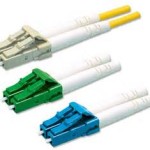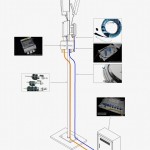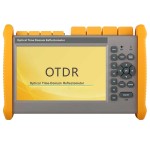Types of Fiber
An optical fiber transmits light through a flexible, transparent strand of pure glass not much wider than a human hair. It functions as a waveguide, or “light pipe,” to direct the light. On a cell tower, an optical transceiver module inside the towermounted radio converts the optical signal into electrical signals for modulation by the radio.
While many different types of fiber optic cable exist, singlemode fiber (SMF) and multimode fiber (MMF) appear most often in tower installations. In general, SMF can operate at a higher bandwidth than MMF. Both types of fiber meet or exceed the current requirements of both the Common Public Radio Interface (CPRI) and Open Base Station Architecture Initiative (OBSAI) specifications for RRU communications.
SMF and MMF currently cost about the same. However, the cost of the associated optical transceiver module differs greatly. MMF can be used with a low-cost transceiver, while SMF requires a higher precision laser transceiver. While MMF may offer a lower initial cost at installation, the higher data rates, bandwidth and extended distance capacities supported by SMF ensure a more future-safe system.
Fiber Optic Cable Construction
A fiber optic strand consists of a core and a cladding. The core is made of an ultra-pure glass that provides an optical path for the light. The cladding is also made of glass, but it has been i ntentionally polluted to have a different refractive index to prevent light from escaping the core. The cladding essentially acts as the guardrail for the light, continually reflecting it back into the core. The core and cladding are surrounded by a protective plastic coating, which is stripped away prior to splicing or terminating connectors.
ntentionally polluted to have a different refractive index to prevent light from escaping the core. The cladding essentially acts as the guardrail for the light, continually reflecting it back into the core. The core and cladding are surrounded by a protective plastic coating, which is stripped away prior to splicing or terminating connectors.
Coated fibers may be individually jacketed with a polymer coating, such as PVC. This construction usually incorporates a strength element, such as stranded aramid polymer yarn. Two such jacketed fibers may then be bundled together in a five- to seven-millimeter construction to form a jumper cable. Alternatively, multiple coated fibers can be grouped together in buffer tubes and arranged with a fiberglass central strength member (CSM) to form a multi-fiber feeder cable. In a multi-fiber feeder cable, the coated 900-micron fibers are color coded for easy identification. This color coding follows a standard pattern per the U.S. Energy Information Administration (EIA) specifications.


